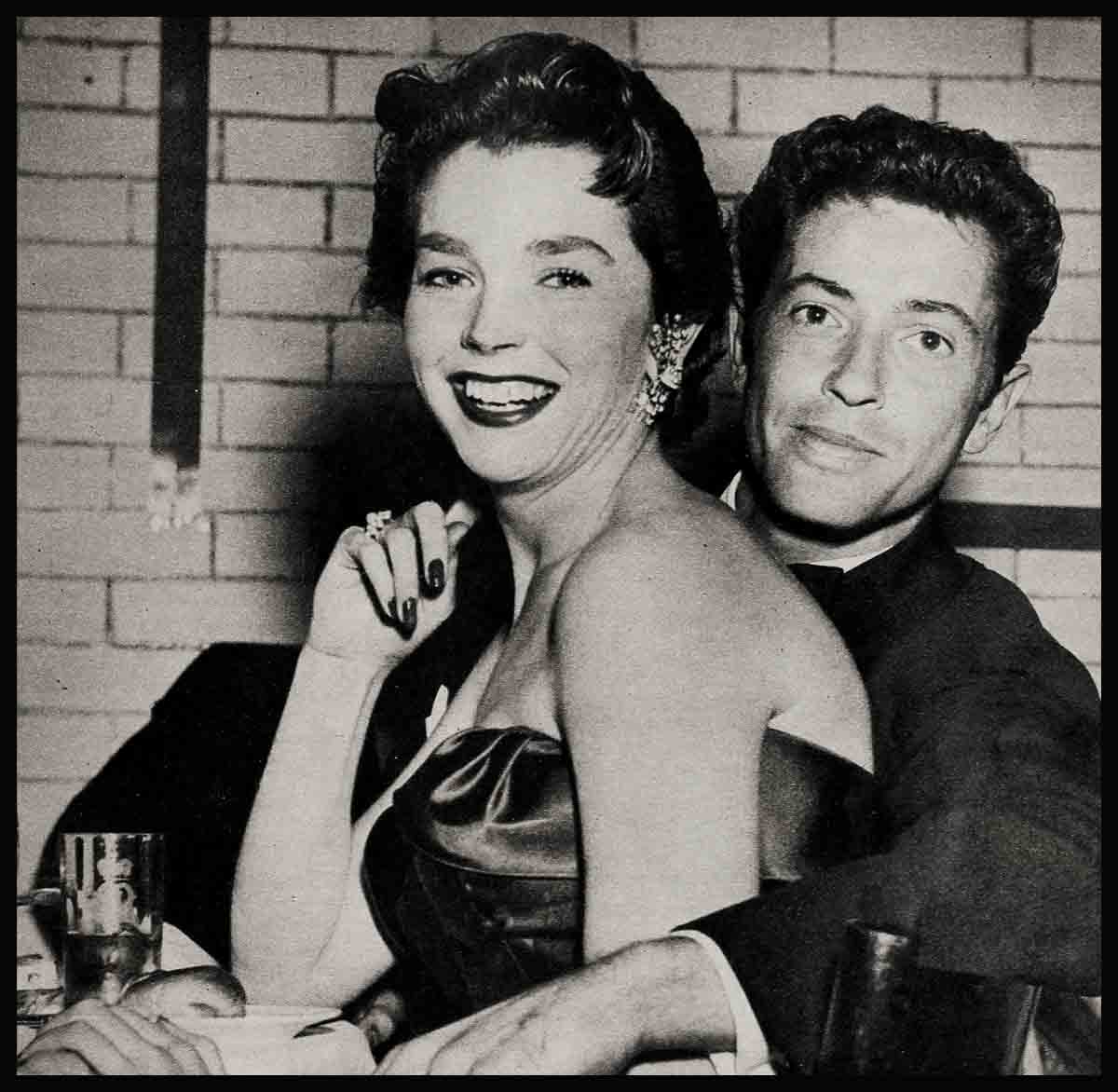
Don’t Blame Farley Granger
The studio publicity man was visibly upset. “Look,” he said, “the photographers all shot pictures of Farley Granger and Shelley Winters at Donald O’Connor’s party. We’re asking everyone to kill the pictures. They just can’t be published.”
“Why not?” the MODERN SCREEN editor retorted. “What’s to be so upset about?”
“Well, you know how it is. They used to go together. With Vittorio Gassman in Italy and all, it’s liable to cause gossip; maybe even stories. You know the kind—‘Is Shelley’s Marriage Failing?’ ‘Will Farley and Shelley Get Together Again?’ These pictures could cause everybody a lot of trouble.”
Oh yes?
Give the publicity man credit for being alert on his job, certainly. But as for starting a rumor that the paths of Shelley Winters and Farley Granger may cross again romantically, well, that’s the best laugh of the year. Any journalist with an ounce-of mixed common sense and honesty will tell you that the “Shell-Farl” romance was one of the neatest little hoaxes ever perpetrated on the public.
No offense, though. It was harmless enough and thoroughly enjoyed by everyone until Shelley lost her sense of humor when a reporter asked her who she thought she was kidding.
“I don’t need Farley for publicity,” Shelley shouted, way back in August, 1951. “If we weren’t on the level, we might have gone on with it for a couple of months. But two years! I’m crazy about Farley and I don’t care who knows it. If I wanted to go with someone just for publicity, I’d go with Francis, the mule . . . just because we didn’t get married in June doesn’t mean we’re not in love . . . we’ll get married when we can, and not when a lot of busybodies think we should.”
The reporter, well-disciplined to the ways of Hollywood in which an actress may one day declare deathless devotion and on the next file suit for divorce, took all this with a straight face. He knew, however, that the bombastic pro-and-con announcements were just a prelude to their well-chaperoned romp through Europe which was expertly tied up with publicity for their latest picture efforts.
Then, like a bombshell, came Shelley’s marriage to Vittorio Gassman. What the press knew all along now became painfully apparent—that, whether by accident or deliberate intent, Shelley and Farley had parlayed a fast friendship into a romance that really was a mirage.
All of this was fine for Shelley, but mighty embarrassing for Farley. Stuck with all the promises of undying devotion between them, some of which were thrust into his mouth by irresponsible columnists, Mr. Granger made a few terse statements congratulating Shelley. Then he withdrew into silence. He was not heartbroken by any means, although a great portion of the public looked upon him as a defeated warrior being carried off the field of romance on his own battered shield.
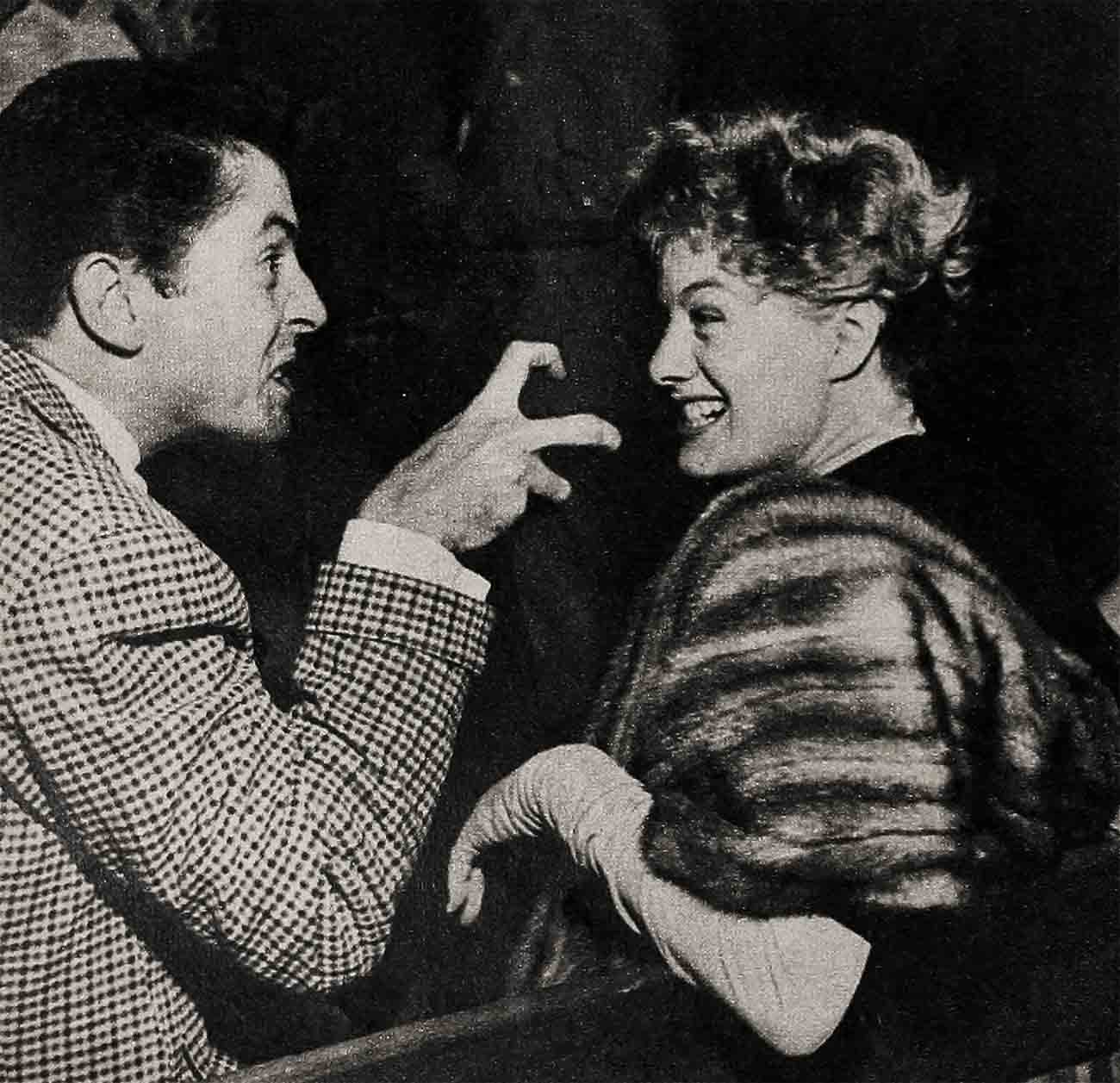
Many months passed. Apparently Farley had come to the realization that he must use considerably more restraint. At least, he carefully avoided public appearances with numerous little starlets who had in mind becoming Farley’s next “big moment” for the sake of hitting the headlines. One flashy little number told this reporter: “If I can get this guy to date me a few times I may wind up with a nice studio contract. All I have to do is tell my boy friend to get lost. I’ll date Farley for dinner and meet my guy later.” Unfortunately for her grandiose plans, and fortunately for Farley, her plot didn’t work.
Sire more time swept across the calendar. Then, as in a well-written play, the curtain came up again. On stage came the lissome figure of Dawn Addams, pert, blonde and looking a lot like Janet Leigh. The first time Farley Granger appeared with her in public no one paid any attention. Then, after the third date, photographers began to take notice. “This,” they told their editors, “looks like a romance.”
Wires flashed across the country. Magazines went to press with an odd assortment of stories. Dawn Addams was the girl who would cure Farley’s broken heart. Dawn Addams was going to give Farley the publicity romance a romantic movie star needs. Dawn Addams was a clever little girl who was going to do a lot for Dawn Addams.
It so happens that none of the stories were true. Like Shelley Winters, Dawn might shout, “I don’t need Farley Granger for publicity!” Unlike Shelley, she might add, being a highly intelligent girl, “If I wanted publicity Farley would be about the last man I’d date to get it.” No offense to Mr. Granger, a wise girl would know that the public probably will never again really believe a romance in his name unless he should suddenly elope and show up the next day in Hollywood with a bride.
Frankly, the situation is one that can re-fleet considerable undeserved talk about Dawn Addams. True, she is fond of Farley. She openly admits it. What is more to the point is that Dawn Addams is a good friend of Shelley’s. They are so close that Shelley, after she married Vittorio, suggested to Dawn that she start seeing a little of Farley, who was getting very lonesome.
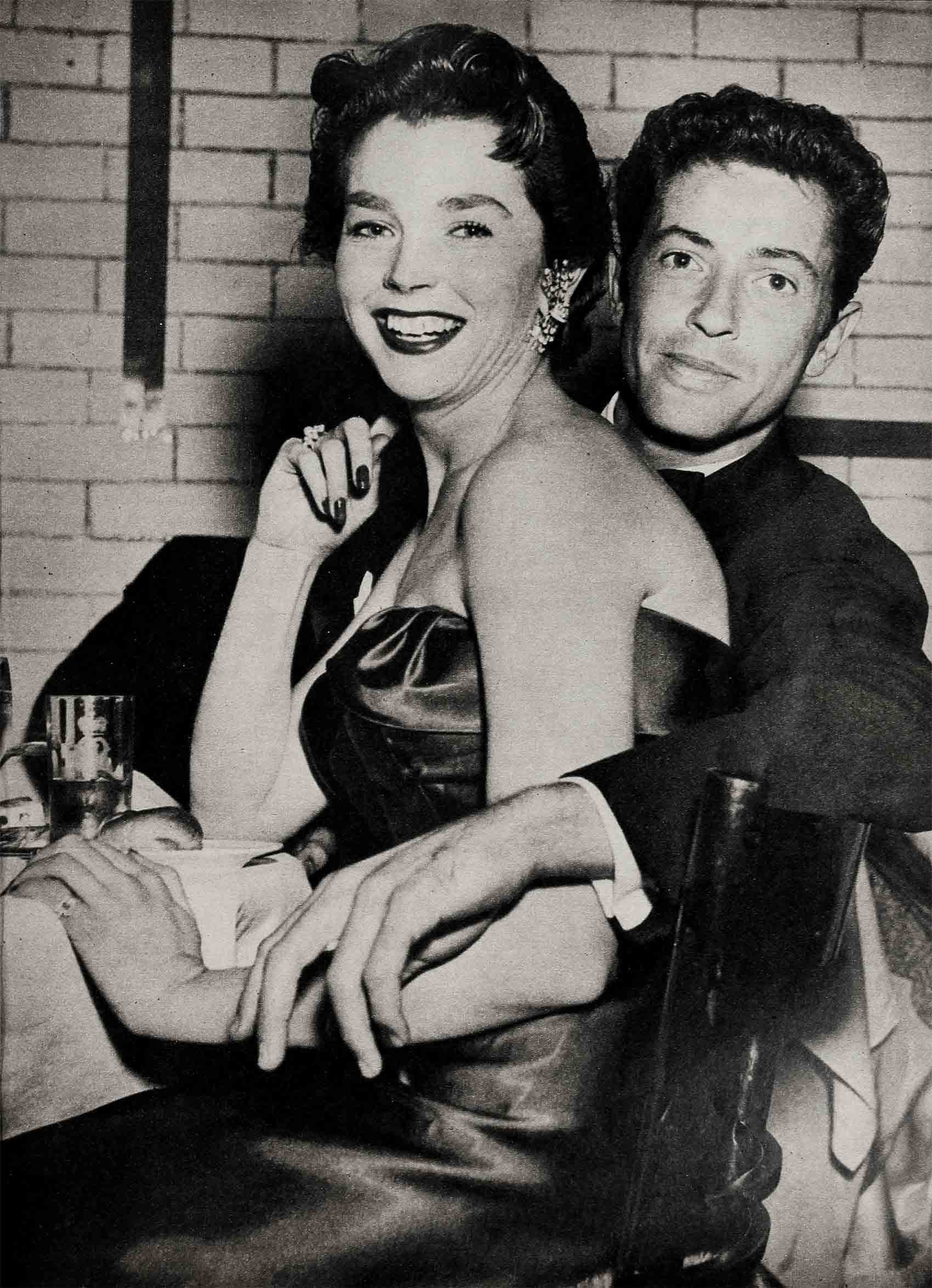
Shelley and Dawn are such good friends that just before Mrs. Gassman’s baby was born, Dawn borrowed some of Shell’s luggage for a trip to New York. They first became friends during the now-lamented jaunt Shelley and Farley took to Europe. Dawn, an English actress, was engaged at the time, and was working in a picture called The Hour Of 13, with Pete Lawford. She liked Farley very much, but not romantically. And that’s the situation as it stands right now.
“To be truthful,” she says, “I don’t know or care what anyone else thinks of Mr. Granger. I like him because I believe he is a sincere boy. You know, I frequently have people come to my home for an evening. Frequently they’ll say, ‘What are we going to do?’ If I say, ‘Oh, nothing much—maybe we’ll just sit around and talk,’ they seem disappointed. I don’t know why Hollywood is a place in which everyone has to be ‘doing’ something every minute, but that’s the way it is.
“Farley is different from most young men. He enjoys a group of people who may sit around until six A.M., just talking about anything that may come to their minds—poliics, religion, acting, sex. His company is always stimulating.”
On the other hand, Farley has this to say about Dawn: “I love to take her to parties because she’s resourceful and self-sufficient. I don’t have to dance constant attendance upon her because she enjoys others at affairs as well as she enjoys the group she’s with.”
All the elements of romance seem to be present; yet anything you may read in columns or magazines about blossoming love between the two is strictly for the birds.
Sure, they date two or three times a week and their activities are a little reminiscent of the old days between Shelley and Farley. For instance, one night Farley arrived to call for Dawn, impeccably attired in black tie and tux. Dawn came racing downstairs in blue jeans, all set for the Venice Pier Amusement Park.
“We made every shooting gallery and rode on every dizzy contraption in the joint,” Farley says. “Dawn in dungarees and I in full dress. Believe me, I never had such a terrific time before in my life.”
Right here it would be very easy to twist the facts. If he never had a more terrific time, that could mean that he has more fun with Dawn than he ever had with Shelley. And if he had it bad for Shelley in the romance department, he could be about ready to get down on his knees to Dawn.
That’s not going to happen for a couple of big reasons. In the first place, Dawn is not naive, nor is she an opportunist. True, she has had enough difficulty gaining recognition in Hollywood to make a publicity romance with a star of Farley’s proportions an attractive temptation. But this is one mistake she is not going to make, unless over-zealous editors make it for her.
When she first came to Hollywood, and signed a seven year contract with Metro, she thought she was on her way. “Do you know what a seven year contract can mean?” she asks. “Almost nothing. When the first option comes up in six months you may be ‘dead.’ At first, I was all excited. I played a couple of small parts; then I discovered that almost everything that was ideal for me was also ideal for Janet Leigh. We don’t really look alike, but we’re the same type. I haunted the casting department. A wonderful part came along in Ivanhoe. People stopped me on the studio streets to congratulate me on my test. Someone else (Joan Fontaine) got the part. Another fine opportunity went to Diana Lynn. I’m not blaming the studio. The things I could de were turned over to people with ‘names.’
“Then I went on a personal appearance tour. When I came home, I was called into the office of Mr. Big and congratulated on doing a fine job. A few days later came the news that I was being dropped. It was tough to take at the time.”
Shelley Winters helped to bolster Dawn’s spirits. She could have told her: “Look, I have a swell idea. Since they want people with a name, why don’t you get yourself one by having a hot romance with Farley Granger?” She didn’t. But she did help Dawn meet people who could help her. One of these was the publicist, Russell Birdwell. They had a long talk. Dawn told him many things, including the fact that when she first went to Metro, she felt that she wanted to develop strictly on the basis of her talent alone. For instance, when the studio press agents asked her to give them a bathing suit sitting, she demurred. “I don’t want leg art,” she told them.
For Mr. Birdwell and the outstanding photographer, Johnny Engstead, she climbed into a bathing suit. The results were gratifying. She did other things that previously had been on the order of “revolting.” People began to pay attention. Not only did this girl have talent. She was real gone in the sex appeal department. This, plus a good job of pounding by her agent, Charles Feldman, produced results. Author F. Hugh Herbert, in writing the stage play, The Moon Is Blue, had included a character named Cynthia, who was talked about by the whole cast, but who never appeared in the flesh. When he did the movie version, he wanted to bring Cynthia to life. He and Director Otto Preminger conducted a long search for just the right girl to play the pixy-ish, wanton Cynthia. One good look at Dawn Addams convinced them, with the result that the public will get its first real look at this promising actress when she hits the screen, playing the lusty temptress.
Then, free of a forbidding contract, Dawn was signed to play the role of the bank president’s daughter on the new Alan Young Sunday CBS television show. But, the most important thing that has happened to Dawn Addams—considerably more important than being Farley Granger’s girl—is her assignment to play a small but potent part in The Robe.
All these things have come about without the knowledge of those who may start accusing her of “doing a Shelley Winters” with Farley Granger: As anyone can plainly see, the trend of events can do a grave injustice to this 23-year-old girl who very apparently has every opportunity to reach the popularity proportions of a Piper Laurie or a Janet Leigh in another year’s time.
But don’t blame the “romance” on Dawn Addams for just one more important reason. She happens to be in love. Not with Farley Granger, but with the terrific French actor, Claude Dauphin, whom you may have seen in April In Paris, with Doris Day, and certainly should see with Bing Crosby in Little Boy Lost. Claude is in Paris now. When he returns, this romance might suddenly end in marriage.
It might end another way, too, unless Mr. Dauphin is wise enough to discount the things he may be reading in the papers these days about Dawn and Farley.
Perhaps Farley Granger is aware of all this. Perhaps he isn’t. One thing, however, is certain. If he wants to keep the friendship of Miss Addams as she most certainly wants to keep his, he’ll have to take a leaf from his past experiences with Shelley Winters and make it very plain to everyone that this is only companionship.
The Shelley Winters-Farley Granger romance is now a legend, almost as ancient as the brief Greta Garbo-John Gilbert affiliation of a generation ago. May both rest in peace. And may the Dawn AddamsFarley Granger friendship remain exactly that as proof to the rest of young Hollywood that honesty is the best policy.
(Farley Granger can be seen in MGM’s Story Of Three Loves.)
THE END
—BY PAMELA MORGAN
It is a quote. MODERN SCREEN MAGAZINE JUNE 1953


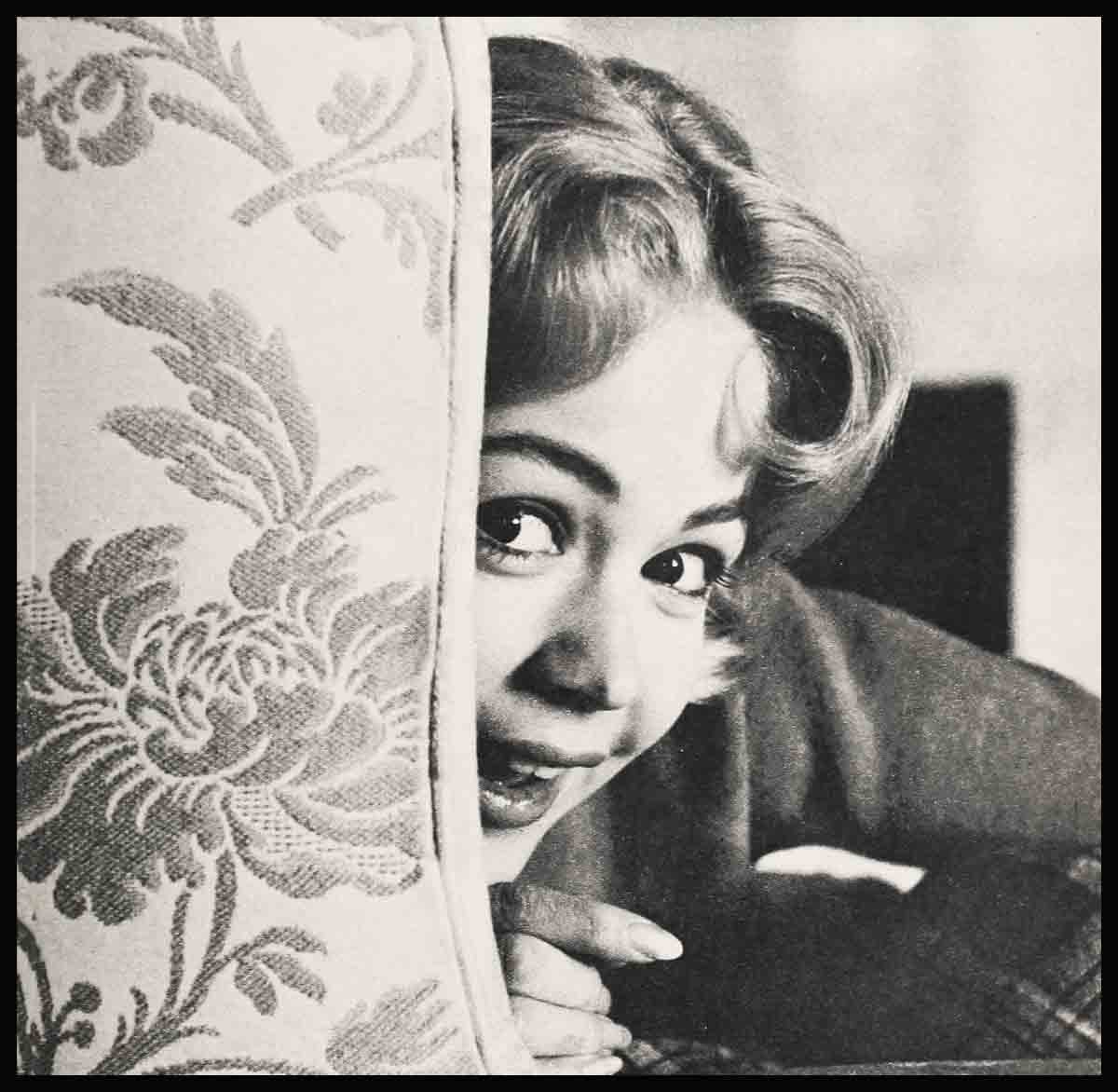
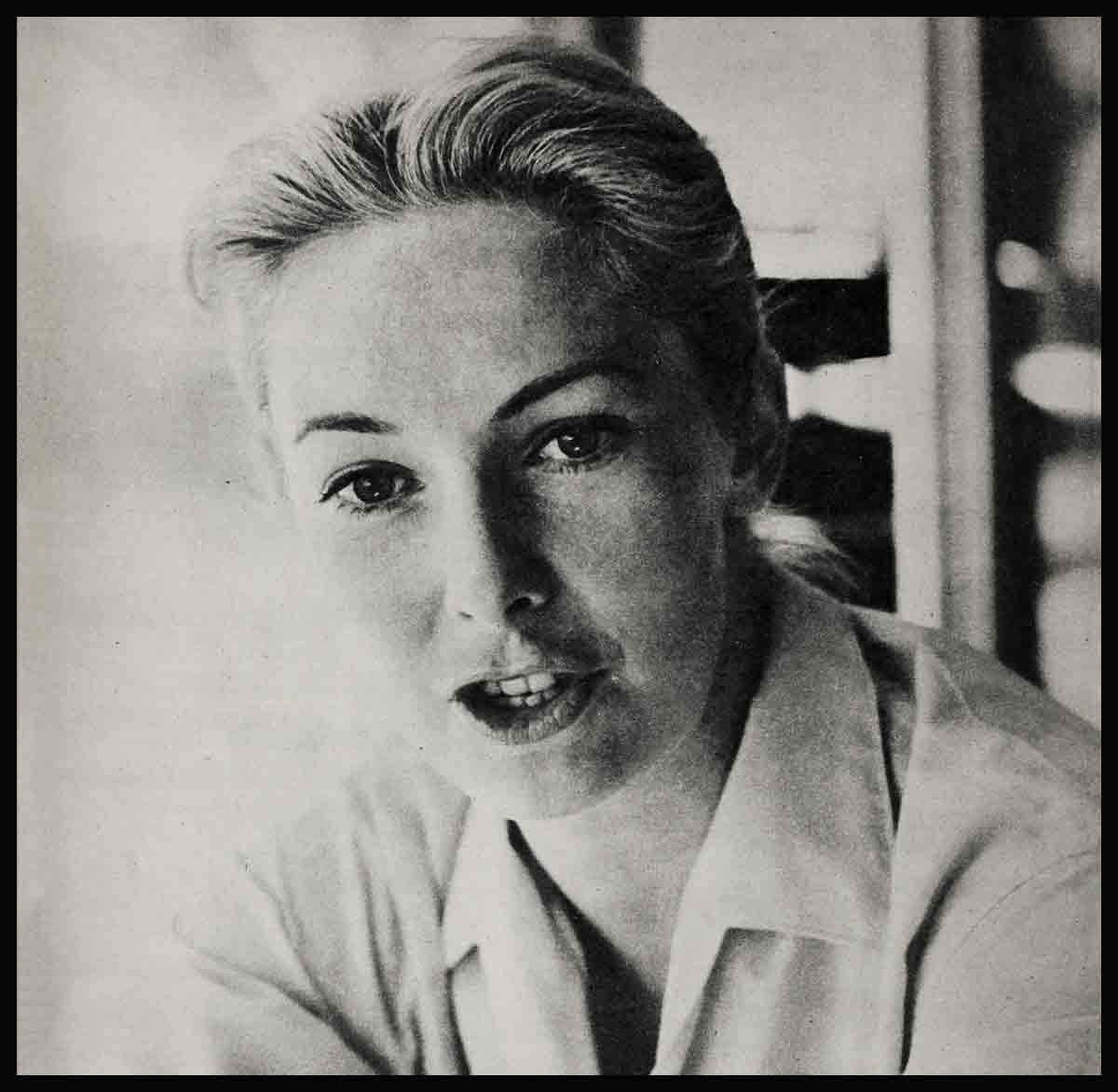

No Comments